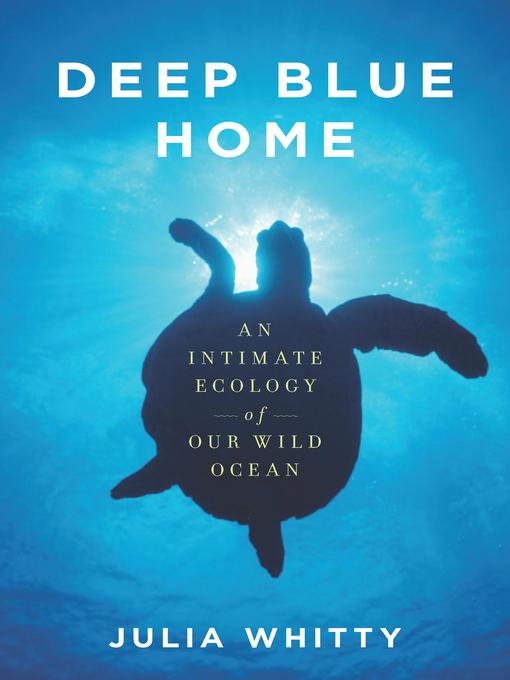
Deep Blue Home
An Intimate Ecology of Our Wild Ocean
کتاب های مرتبط
- اطلاعات
- نقد و بررسی
- دیدگاه کاربران
نقد و بررسی

April 5, 2010
Mingling mythology with science, Whitty pulls readers into the watery depths of the oceans, home to the birds, whales, and other mysterious creatures that have been her lifetime passion. She writes of Isla Rasa in the Gulf of California in Mexico during the short springtime breeding season, when “the island mushrooms into a jittery cloud visible for miles”; off the coast of Newfoundland, she encounters the “annual migration of the icebergs, a spectacle as grand as the exodus of wildebeest through the Serengeti,” and a leatherback sea turtle with “flippers the size of oars, and a head like a draft horse's, wearing a jellyfish mane.” Whitty's biology is colored by “the gods of rock and the goddesses of seawater,” such as Rasa, the Hindu “mythical river flowing around the world,” and the Elivágar, from the Viking creation story. This luminous prose is disturbed by accompanying reports of human-induced damage of oceanic ecosystems, where “market economics relentlessly drives commercially desirable species towards extinction” like a modern plague, exemplified by the collapse of the Newfoundland cod fishery, which caused a “trophic cascade” transforming all aspects of the ecosystem “from crab to zooplankton to phytoplankton to nitrates.”

April 1, 2010
Mother Jones correspondent Whitty (The Fragile Edge: Diving and Other Adventures in the South Pacific, 2007, etc.) looks at the life of the oceans and the sea creatures she has observed over the past 30 years.
The author expresses significant concern about the fate of the many animals she has communed with, including a massive sea turtle—"straight out of prehistory…whose ancestors once shared the ocean with dinosaurs"—swimming in the Gulf of California with only a 50 percent chance of surviving in any given year because of the dangers of illegal capture, dangerous fishing gear and pollution. In the 1980s, Whitty spent two seasons on Isla Rasa, a small island off the coast of Baja California, where she assisted two scientists who were studying the behavior of falcons and the sea gulls and terns that they preyed upon. After visiting a neighboring island to observe least storm-petrels,"the smallest species among the smallest of all the seabirds," she explains that they were probably named for Saint Peter, who, like the petrels, supposedly walked on water. In 1984, she and a partner filmed seals and small minke whales as they fished and witnessed an iceberg"slicing like a blue fluke into the air and listing in the wind before disintegrating into a debris field of slush and brash ice skidding across hundreds of yards of ocean surface." Today, laments the author, along with the pollution of the oceans, modern fishing boats use monofilament fishing lines (with more than two billion hooks) and drift nets to catch tuna and cod, a practice that also threatens the lives of other fish, sea turtles and sea birds. In 2006, Whitty began work with a scientific crew searching for clues to the origins of life in the depths of the ocean.
A lovely, soft-spoken book about the"joy, inspiration, wonder, laughter, ideas" that come from relating to Earth's"nonhuman world."
(COPYRIGHT (2010) KIRKUS REVIEWS/NIELSEN BUSINESS MEDIA, INC. ALL RIGHTS RESERVED.)

April 15, 2010
Despite a lack of formal scientific credentials, Whitty ("The Fragile Edge: Diving and Other Adventures in the South Pacific") proves to be a keen observer of the natural world in this lyrical account of her adventures as a "sea tramp," a documentary filmmaker, and a freelance naturalist. Studying gulls, peregrine falcons, storm petrels, sea lions, and whales in locations ranging from Isla Rasa off of Baja California to Newfoundland to the Galpagos, she points out the complex ecological relationships in various climates and environments. Whitty conveys her dismay at the effects of climate change, the loss of biodiversity, and the fragility of many life forms; interweaves legends from Hindu writings, Greek mythology, and Icelandic sagas into topics such as animal life cycles, Gulf Stream circulation, the Labrador current, and Atlantic bottom water; and touches upon the effects of organic pollutants on the marine environment and of human activities on ocean temperature and salinity. VERDICT Lovers of both terrestrial and marine nature and readers who enjoyed Alexandra Morton's "Listening to Whales" and Trevor Norton's "Underwater To Get Out of the Rain" will be inspired to use their powers of observation to appreciate the natural environment.Judith B. Barnett, Univ. of Rhode Island Lib., Kingston
Copyright 2010 Library Journal, LLC Used with permission.

























دیدگاه کاربران